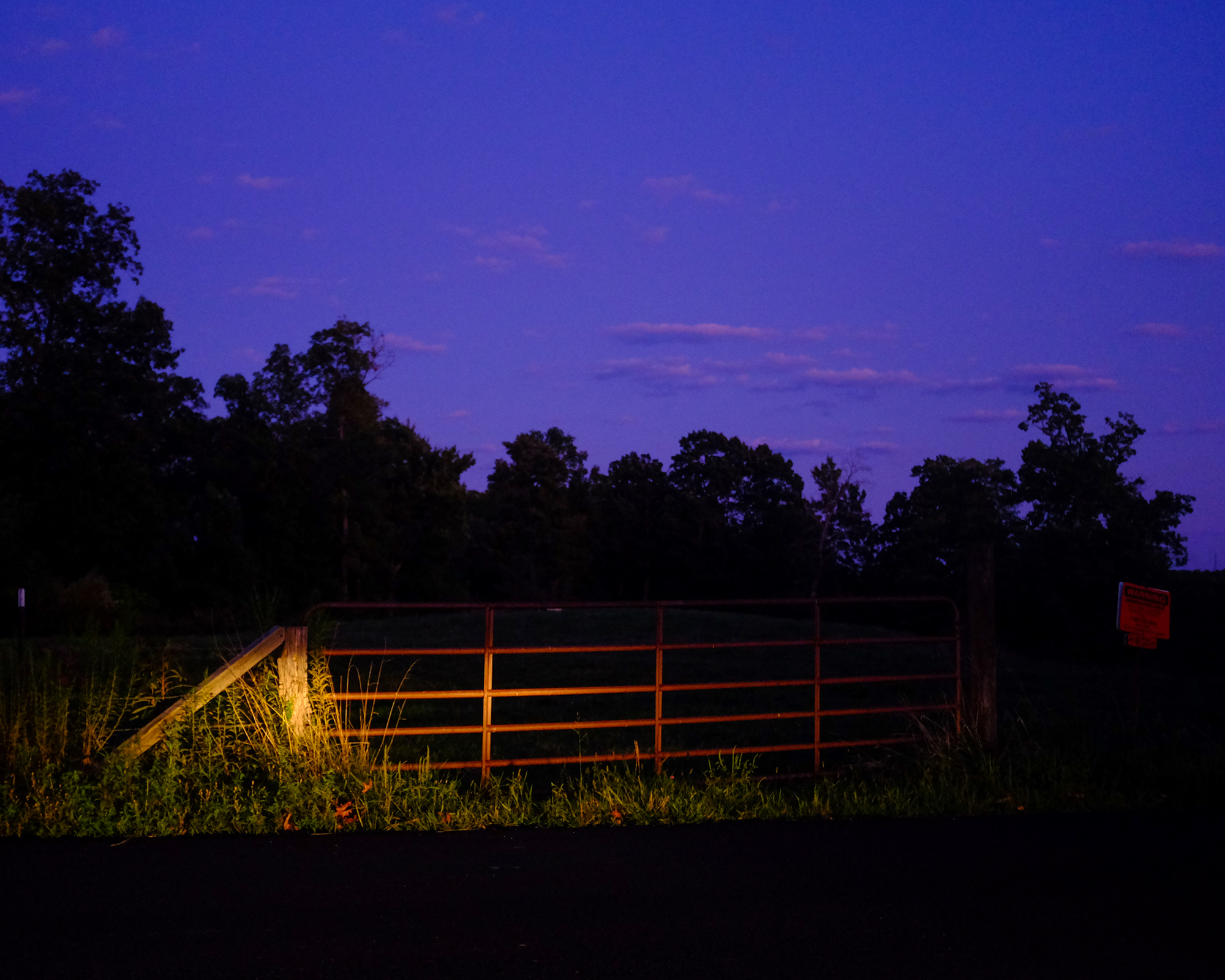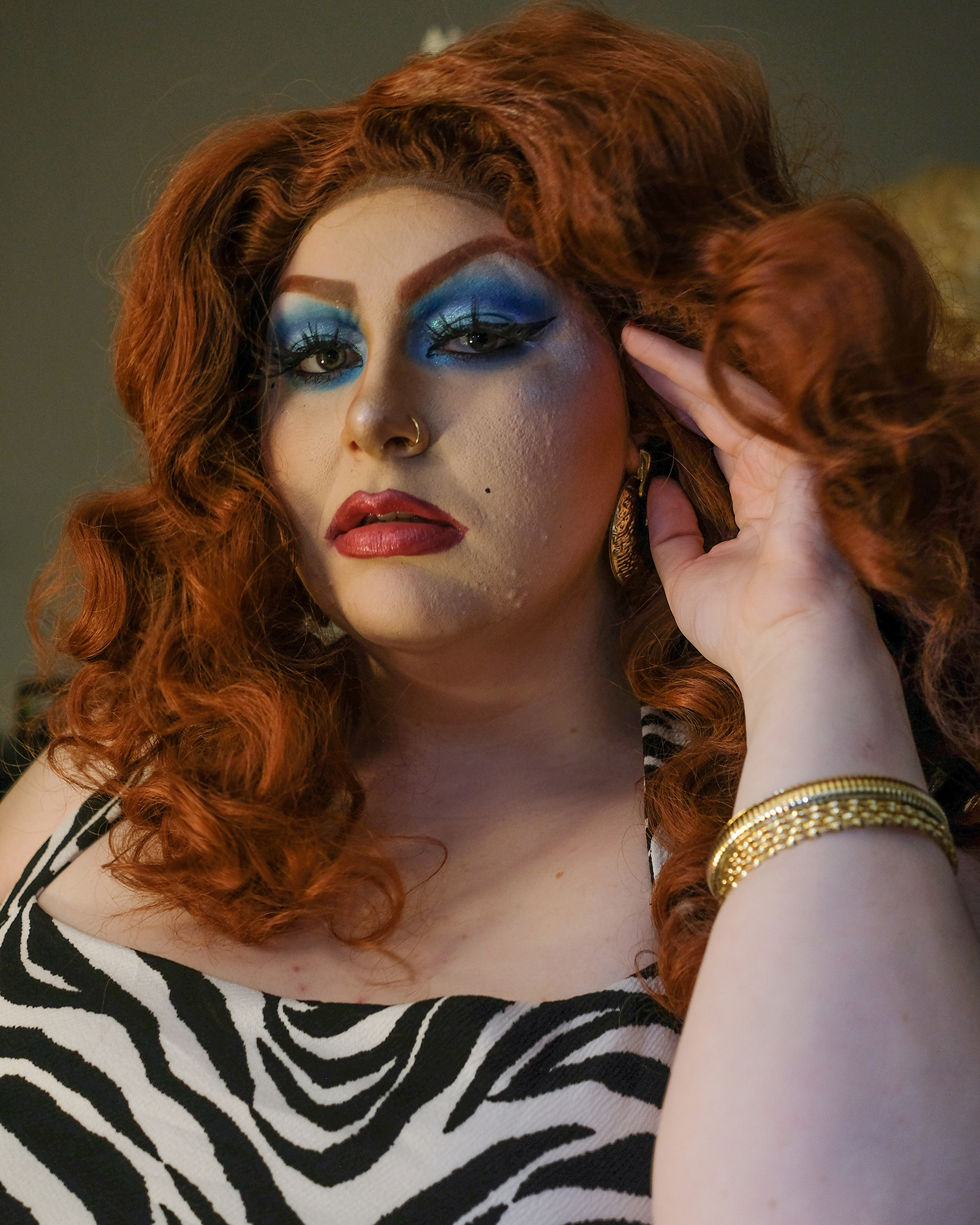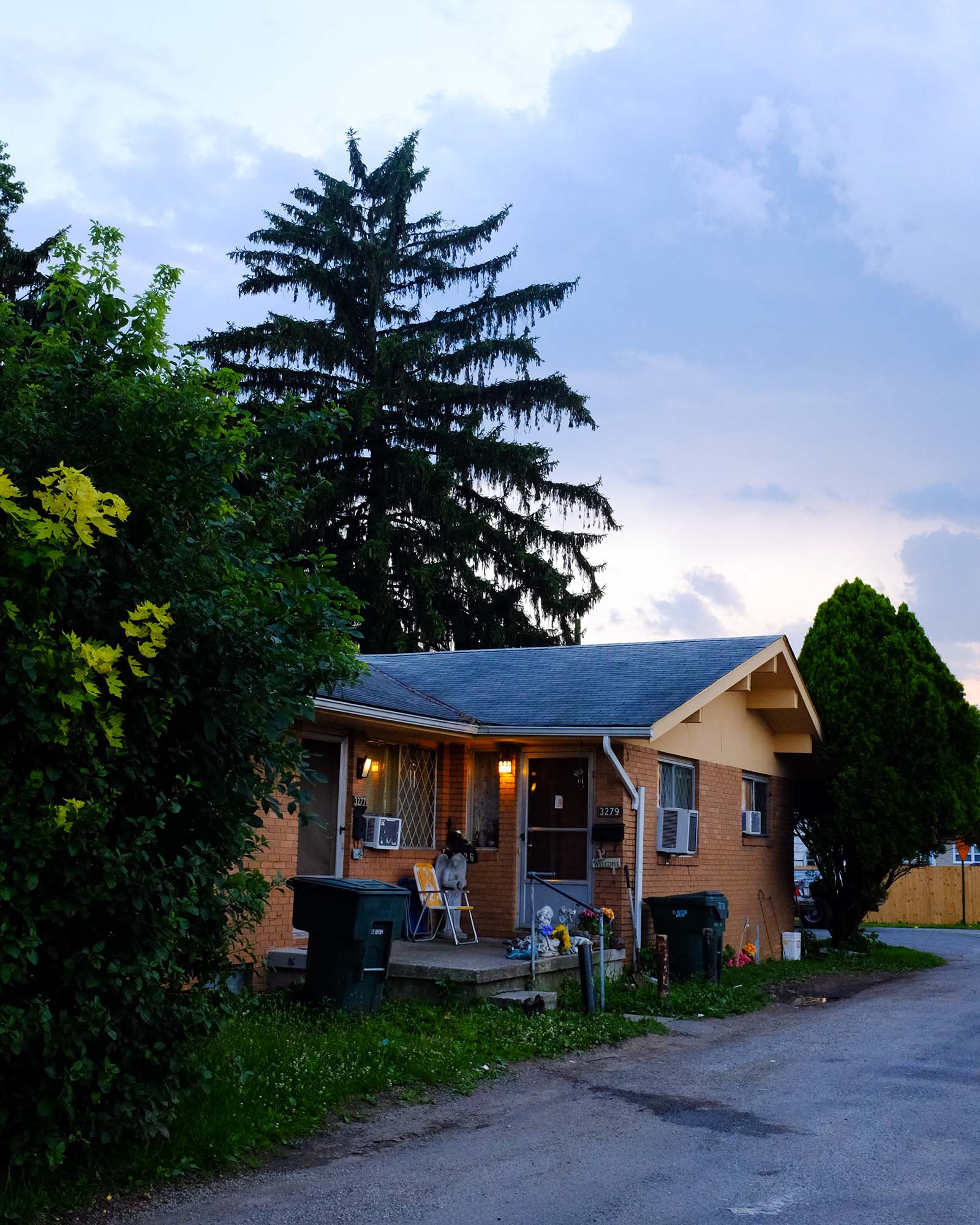


-
Ruth Awad & Julie Rae Powers
In conversation
-
⏧ ⏧
⏧
Ruth Awad: Let’s start from the
top: what compels you most about photography and its potential? What keeps you
interested in this artform?
Julie Rae Powers: I think what compels me most about photography is its sense of immediacy. How reality can be turned into a physical object to be mulled over and studied, to be recalled, to be cherished or obsessed over. That immediacy has been an important tool in my own practice as it gave me the ability to see myself as a queer person. I am perpetually interested in photography because of how fast it has evolved in its short lifetime. It is fascinating to me that photography lives at an intersection of alchemy, storytelling, art, and function. Photography has become the most accessible medium because of smartphones, in my opinion, which I think is incredibly important in allowing folks who may not have access to art classes or artistic communities to express themselves.
Julie Rae Powers: I think what compels me most about photography is its sense of immediacy. How reality can be turned into a physical object to be mulled over and studied, to be recalled, to be cherished or obsessed over. That immediacy has been an important tool in my own practice as it gave me the ability to see myself as a queer person. I am perpetually interested in photography because of how fast it has evolved in its short lifetime. It is fascinating to me that photography lives at an intersection of alchemy, storytelling, art, and function. Photography has become the most accessible medium because of smartphones, in my opinion, which I think is incredibly important in allowing folks who may not have access to art classes or artistic communities to express themselves.
⏧
Ruth: I love the idea of photography as a way to see oneself literally and figuratively, and it reminds me of one of the earliest images I saw of yours: a portrait of you in a coal miner’s hat, an image that challenges stereotypes about Appalachian and queer identity. How was creating this image a way of seeing and understanding these intersections?
Julie: Creating this image started as an exercise in trying to understand my father’s perspective inside of a coal mine (which is nearly impossible to understand without actually living that experience). I had all of his mining equipment, the belt with the battery for the light, the helmet, the gloves, etc. I went to Walmart and bought the same Dickies he wore. I collected all that, put it on, and went into my basement with my camera for several hours. Just feeling the weight of all of the equipment. Imagining the weight of the darkness. Attempting to understand him and his experience was a way of understanding my own in some ways. Namely, my obsession with this particular type of masculinity. Emulating my father was a way of opening up other questions and explorations about gender, queerness, and Appalachia. The journey led me to feel and believe that Appalachia is much more queer than we give it credit for.
⏧
Ruth: I think so
much of art is fueled by an artist’s obsessions: recurring ideas, the
questions we keep asking. What question is your current body of work
asking? What, if any, conclusions or resolutions have you arrived at, or
is that not the point?
Julie: My most recent body of work “Once More, Gently” is less of a question and more of an answer to one. I feel like most mainstream depictions of queer folks almost always include some sort of tragedy or violence in the queer individual’s world. I wanted more queer joy or at least some type of nuanced look at a queer person’s experience. “Once More, Gently” isn’t overtly queer, I guess, but it is a narrative crafted and told by a queer artist. It is a loosely tied together story of my own coming of age in my late twenties. I wanted to honor the richness of that experience in a body of work.
Julie: My most recent body of work “Once More, Gently” is less of a question and more of an answer to one. I feel like most mainstream depictions of queer folks almost always include some sort of tragedy or violence in the queer individual’s world. I wanted more queer joy or at least some type of nuanced look at a queer person’s experience. “Once More, Gently” isn’t overtly queer, I guess, but it is a narrative crafted and told by a queer artist. It is a loosely tied together story of my own coming of age in my late twenties. I wanted to honor the richness of that experience in a body of work.

Ruth: Yes! In a culture both creates and consumes trauma, joy is such a powerful means of survival. I also find joy is one of the hardest things to capture in art, from my experience. How do you convey joy in your work? What are the moments or conditions you’re looking for? Which artists do you admire whose work explores joy?
Julie: I think I am still exploring and learning how to convey joy in my work. It hasn’t necessarily been a component of it before. My first endeavor in creating work with joy was “Out of Hiding,” which were portraits of queer chosen families. Then came “Once More, Gently.” Everything before that was exploring a sense of pain and rejection from my family, feeling as if I didn’t belong or couldn’t fit into rural spaces because I was queer, the conflicts I felt as an artist living in an urban environment while having such a reverence and love for the hills. “Once More, Gently” and “Out of Hiding” are derived from the same place though. Seeing a lack of queer joy. Witnessing queer tragedy in media has become nearly unstomachable. I decided I have to do the work to make the change. Be part of the solution. I think one thing that is present when I find a moment of joy to create art about is that there is always a small, very present ache in my heart that is a mix of love and pride. That is the cue I try to follow.
As far as artists making work with joy – I don’t necessarily think I am looking at artist’s work that is overtly joyous or has capital J-O-Y, but I am looking at work that challenges whatever notions we have about certain moments or communities. Lately I have been really taken by the softness and stillness in Jeanette Spicer’s work. Jeanette’s project “What It Means to Be Here” exploring the lesbian gaze feels so important for me. I also sit with Rashod Taylor’s portraits of his son LJ from a series titled “Little Black Boy.” There is something so tender about how a son is photographed by his father.
⏧
Ruth: How do you make your
images? What considerations are most important when translating an idea or
subject?
Julie: As you mentioned before, a lot of art is fueled by an artist’s obsession with ideas or questions or whatever it may be. There is constantly something they are circling around. I have several topics, scenes, or spaces I obsess over. That is how I make images. I constantly go back to those environments or topics. To name a few, I am really obsessed with rural spaces (the South), the quiet of the Midwest, working class aesthetics / spaces, queerness. Mental gravity seems to pull me there and my camera comes along for the ride. The considerations change based on what project I am working on, but as of late, I try to encourage myself to be curious and make an image without judgement, to take it anyway, even if in that moment I question it. I try to leave the questioning for later in the process.
Julie: As you mentioned before, a lot of art is fueled by an artist’s obsession with ideas or questions or whatever it may be. There is constantly something they are circling around. I have several topics, scenes, or spaces I obsess over. That is how I make images. I constantly go back to those environments or topics. To name a few, I am really obsessed with rural spaces (the South), the quiet of the Midwest, working class aesthetics / spaces, queerness. Mental gravity seems to pull me there and my camera comes along for the ride. The considerations change based on what project I am working on, but as of late, I try to encourage myself to be curious and make an image without judgement, to take it anyway, even if in that moment I question it. I try to leave the questioning for later in the process.


Ruth: In addition to being a photographer, you write poetry. Do these mediums overlap for you? Does one ever lead to the creation of the other?
Julie: I think they overlap because they are different means to the same ends. When I write poetry, it is because a photograph fails at conveying the question, obsession, or story I am trying to share. I think photography has limitations because it collapses a three-dimensional world into a two-dimensional experience. Sometimes the experiences I want to share are too big or layered to be conveyed in a small series of two-dimensional worlds. When I run into those limitations, that is when writing or poetry come into play for me. On the other hand, if a poem feels as if it is revealing too much or the confrontation of the subject feels too raw, I switch to photography.
⏧
Ruth: You’ve described your most recent photobook Once More, Gentlyas a love letter to the people, communities, and homes central to this work. You touched on this a little already, but can you talk more about this project as a whole and its vision?
Julie: The project as a whole was to put something positive, nuanced, rich, and beautiful into the world that was queer. I think an aspect of this project that I don’t quite talk about enough is that I needed this work for my own soul as I had just come out of a fairly toxic relationship and I needed to refocus on what was good about my worlds. I also really believe in honoring the people and places around you while they are present and alive. I don’t ever want to take for granted the gift of positive relationships. This book was a way of saying, I see you, I feel you, I love you, and I honor you.


Ruth: I think that’s why the book is so resonant. The love emanates from those pages. How was Once More, Gently a turning point in your work?
Julie: A lot of photographic work is very dry and academic – there certainly is a place for that – but I wanted to make work from the heart. This was the first project where I disregarded a lot of the photographic rules / approaches prescribed to me during grad school and followed my intuition. I found so much freedom and relief in approaching it this way. I am finally finding a way of making work that feels natural to me.
⏧
Ruth: Community seems to function as both subject matter and praxis for you as an image maker. I’m thinking of Soft Lightning and the work you do to showcase LGBTQ and BIPOC photographers. What is your hope for this platform and what can we expect from Soft Lightning this year and the years to come?
Ruth: Community seems to function as both subject matter and praxis for you as an image maker. I’m thinking of Soft Lightning and the work you do to showcase LGBTQ and BIPOC photographers. What is your hope for this platform and what can we expect from Soft Lightning this year and the years to come?
⏧
Ruth: What image have you made that means the most to you right now? Why?
Julie: I made an image of a colorful bush losing its leaves toward the end of fall. It is positioned under a fluorescent street light so it is glowing with these dense, bright, rich colors, but the rest is dark and ominous. It means so much to me because the signifiers in the image really get at the core of my next project. That there can be bright moments in total darkness. That no moment or period in your life is ever just one thing. Also it reminds me that hope is a necessary and powerful force.
⏧
Julie: My next project is titled “Some Flowers Smell Like Embalming Fluid.” I have started to see it as the other side of the coin to “Once More, Gently.” This project really shares the darkness of that period of my life. I was in a toxic relationship with an embalmer who was freshly discovering her queerness. I was able to explore my interest and relationship to death with someone who was well versed in the topic. The feelings being evoked or explored in this body of work are hope, fragility, isolation, and darkness.
⏧
Ruth: Advice to young queer photographers on finding their visual voice?
Julie: Trust your gut. You don’t need anyone’s permission to tell your story and share your experience. Lastly, be patient with yourself and try to enjoy your evolution as a person and an artist.
///////////////////////////
Ruth Awad is the Lebanese-American author of Set to Music a Wildfire (Southern Indiana Review Press, 2017), winner of the 2016 Michael Waters Poetry Prize and the 2018 Ohioana Book Award for Poetry. Alongside Rachel Mennies, she is the co-editor of The Familiar Wild: On Dogs and Poetry (Sundress Publications, 2020). She is the recipient of a 2020 and 2016 Ohio Arts Council Individual Excellence Award, and she won the 2013 and 2012 Dorothy Sargent Rosenberg Poetry Prize and the 2011 Copper Nickel Poetry Contest. Her work appears in Poetry, Poem-a-Day, The Believer, The New Republic, Pleiades, The Missouri Review, The Rumpus, and elsewhere. You can learn more about her work at ruthawadpoetry.com.
Julie Rae Powers received their MFA in Photography from The Ohio State University and their BFA in Photography from James Madison University. Recently, JR started Soft Lightning Studio, a photography publishing platform dedicated to broadening space in the photo world for image makers who are persons of color, queer, women, among others. Their work has focused on family history, coal, Appalachia, the queer female gaze, the butch body, and queer chosen families. For their day job they work as an Instructional Designer. You can learn more about Julie Rae’s work and find a copy of their new monograph “Once More, Gently” at julieraepowers.com and Soft Lightning’s work at softlightningstudio.com
